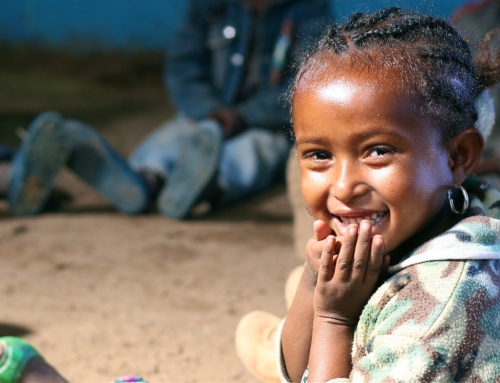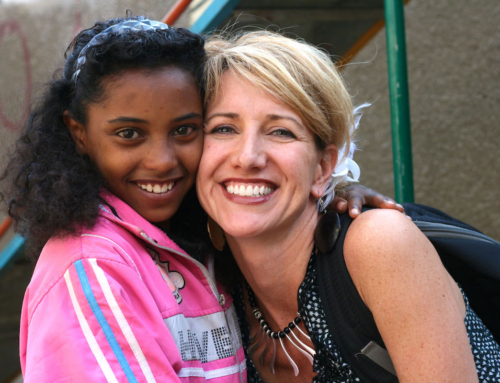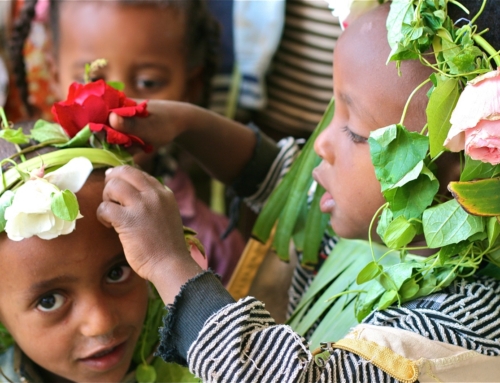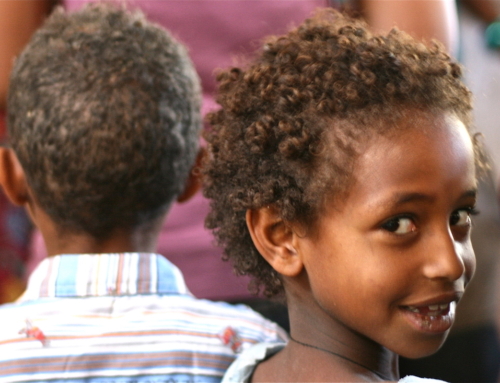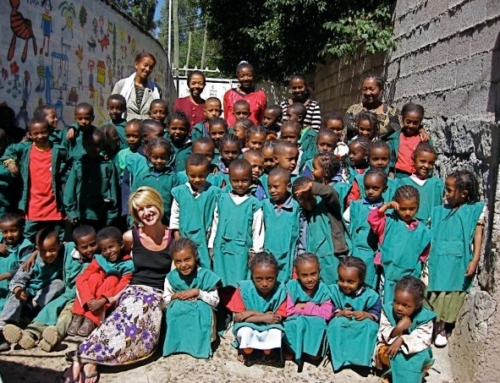A Day at Addis Tesfa
We all have heard to be leery of African governments–a true enough statement, but here’s the catch. The governments run the schools. What we all care about is that children have access the basic right to education. Quality of education is the question.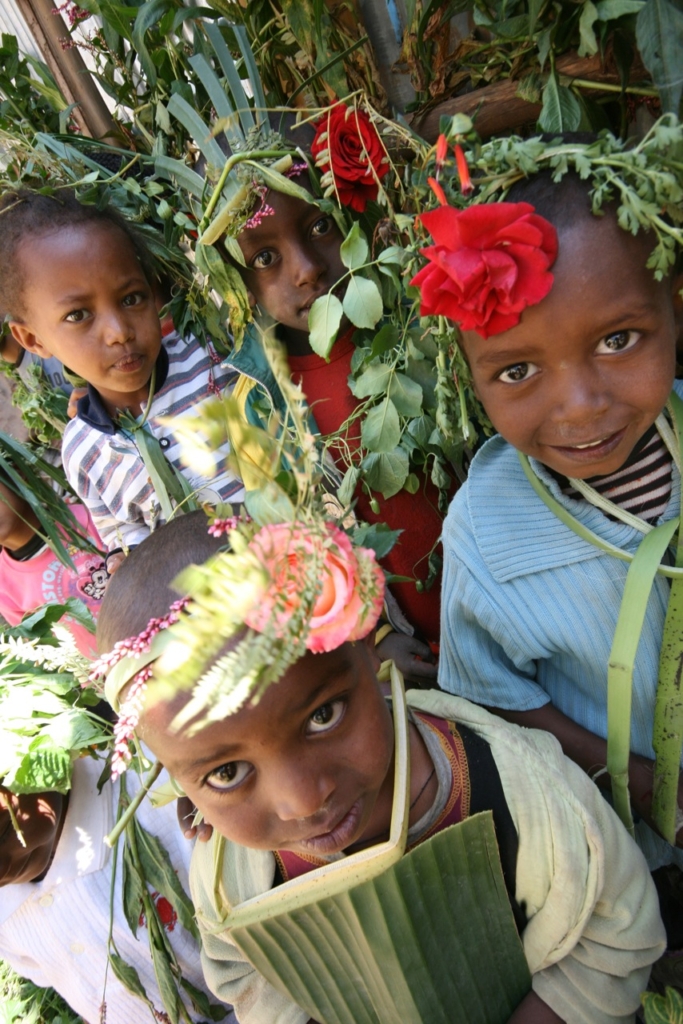
The Tesfa Foundation has focused on providing early childhood education: catch them when they are young and make an impact before something less desirable finds them. When The Tesfa Foundation was founded 8 years ago, the government did not provide any educational options for the youngest age group (4-6). As of this year the government does (in a limited, start-up way). So the question remains, does it make sense to try to partner with the government to help them serve this age group? I do not have answers for you but I can tell you what I experienced.
I arrived at Addis Tesfa on a beautiful sunny December day, ready to provide an art experience for 120 children. What? 120? Kindergarteners? I thought, I might be out of my league here, but they are planning on me and I cannot disappoint 120 precious little ones, can I?
No, in the end I could not. The Tesfa Foundation/Ethiopia Reads office provided me with extra helpers, and we agreed to do our best. The most children I have ever taught at one time was 60; I told everyone, “We have to get creative here and divide into groups.”
We were able to fit all the children comfortably in one room, all 120. In a government school this was possible? Yes, thanks to the Ethiopia Reads beautiful new library we were all able to gather together. This is not typical at all of a government school, making organizations like Ethiopia Reads so valuable, even necessary.
The theme of the day was flowers. Flowers were chosen to honor Noel Cunningham, a dear one who passed just before my visit to Addis Tesfa and who the library at this school was dedicated to. Flowers are also something the children are familiar with and that their city Addis Ababa (translated as New Flower) is named after; that allowed me to tie in some history and cultural pride.
We started with a little song and dance to warm the kids up and break down any inhibitions they might have. These kids had never had an art lesson before, and I wanted them to feel open and excited about this experience. Then we sat at our desks to draw our first flowers in color, and I quickly saw some students had honored their need to create and had been exploring drawing with their pencils. I knew this because some of the drawings were so advanced.
After our warm-up in the library we broke up into groups. Before I move on… I don’t think I have mentioned how much fun we are were having by now. Pure joy!
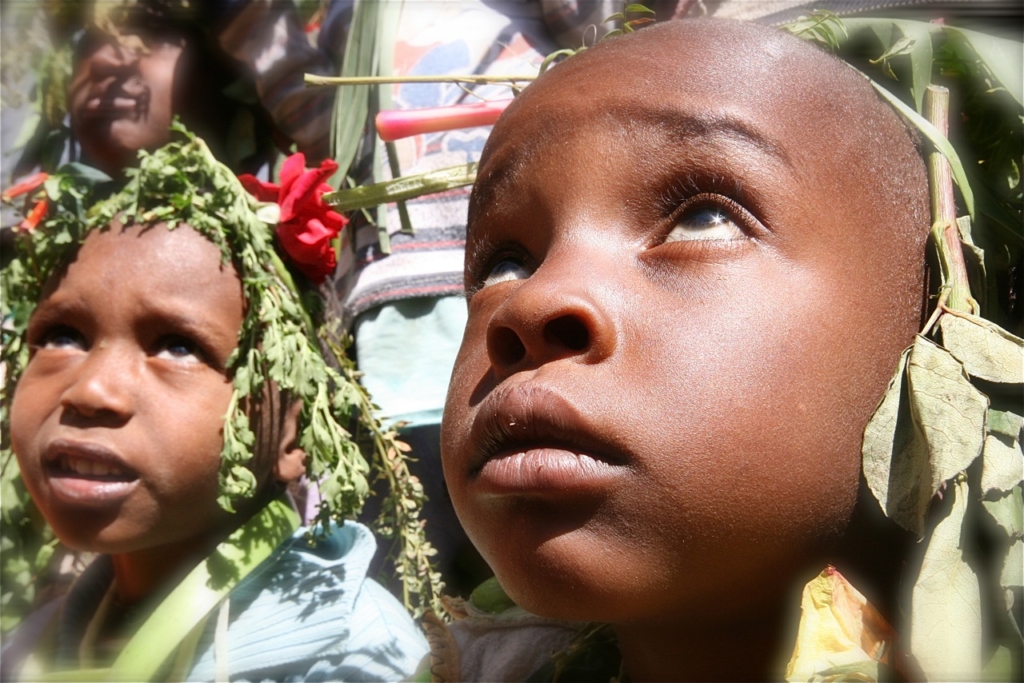
We did two main art projects rotating the children by groups. Some sang and danced in a circle while waiting their turn to paint. Four large canvases were set out on the lawn. Each canvas had enough room for 5 students at a time to work on it. Each child got a plate of paint and a brush, and they worked together until the canvas was covered in five different shades of paint. Then rocks and leaves were used as stamps to create flowers over the under-painting. By the end, the children had the sense of accomplishment that comes from working together and a new beautiful painting to decorate their library.
Meanwhile, inside the library, a local Ethiopian artist named Aklilu was working with the kids on a flower project where children became the “canvas.” They used flowers and plants from what they found outside the school to turn themselves into beautiful flowers. The idea was to get them to think about the things around them every day that they can create with. They don’t have to wait for art class to be creative. All one needs is imagination.
We gathered back in the library when our art was finished, and the children showed off their beautiful new space to me. We had them chose books and it was beautiful to watch their attention become absorbed by the magic of books. One child proudly showed me his new library card, complete with a sweet little picture. The librarian was beaming with pride as the children were so obviously enjoying this special place.
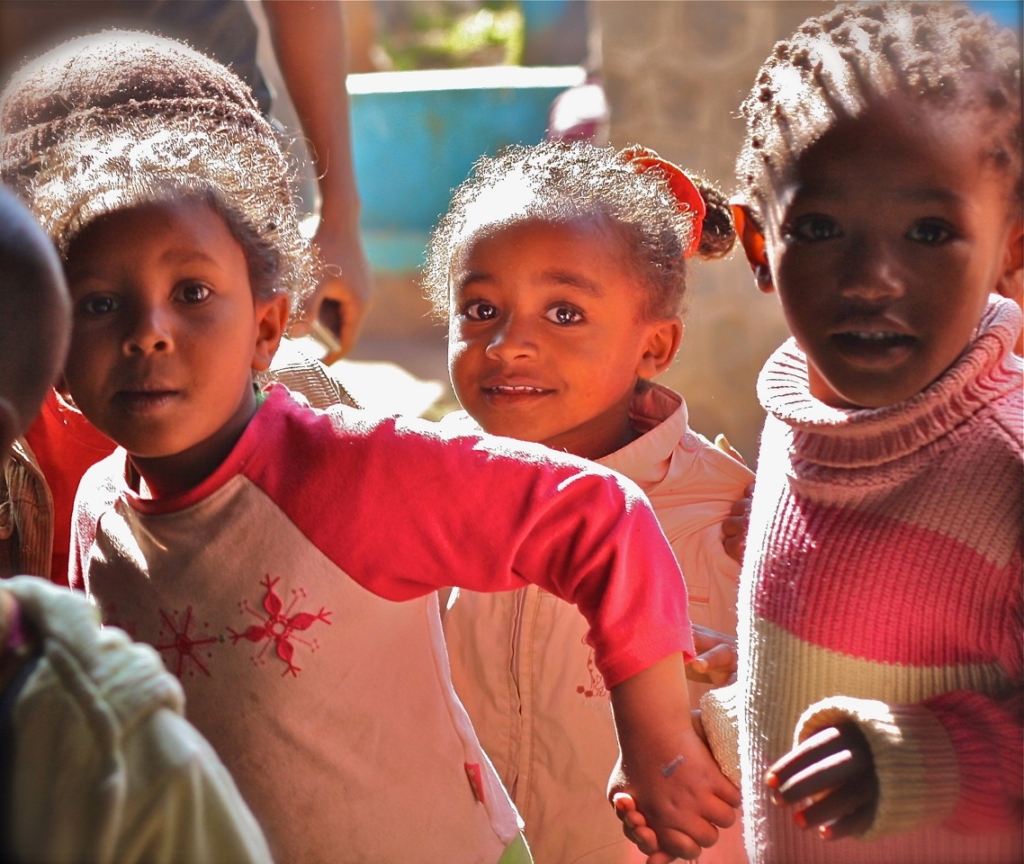
This experience did not nicely wrap-up the government partnerships vs. donor-supported school debate for me. There were older children aggressively trying to take our supplies and encroaching on our space, making me wonder about whether kindergarten children should be in the same school as these older children. The quality of things outside the library walls had so much to be desired. Basic sanitation being at the top of the list. I am used to, and perhaps spoiled by working in Tesfa schools. Our teachers are so well trained, this I can’t stress enough. We have training systems in place and–a real luxury in Ethiopia– we have staff loyalty. People who have been with us for years and understand the importance of quality control. Most important we have given our staff pride in what they do and it shows. The schools are clean, and safe. In Tesfa schools the little ones have the safety of being the only kids in the school and know they can count on no older aggressive bullying, an important issue in a country that has typically operated in a very top-down way.
For me the debate is still on the table as to how we fit in with these new government kindergarten programs. There is no doubt that the organization that I have been a part of for 5 years now, The Tesfa Foundation, runs a far superior school to ones run by the Ethiopian government. On the other side of the coin, do we really want to leave children in government schools to fend for themselves? Where can we have the most impact with limited dollars and staff hours in 2012 and beyond?
Stephanie


